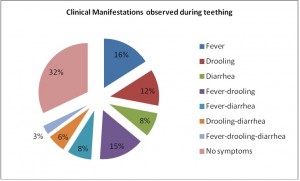Is my baby getting enough breast milk?
[mme_highlight] Breastfeed whenever your baby shows signs of being hungry, like awakening, searching for the breast, sucking on hands, tongue or lips. Parents want to be sure if their baby is getting enough milk. There are some simple ways to estimate it. [mme_highlight]
Human milk meets the nutritional needs of a full-term infant until 6 months with a lot of advantages for your baby’s health, particularly for the development of the immune system.
Mothers should start breastfeeding within the few hours after birth. If, by medical reasons, infant and mother are separated, it is recommended that mothers pump the milk and store it for later use, in order to stimulate the continuous production of milk.
Am I producing enough milk?
During the first days after giving birth, the milk mothers produce has a yellow appearance and it is called collostrum: it provides all the nutrients and calories your baby needs for the first days of life. Many women worry because their milk production is low at beginning and fear their infants do not get adequate feeding. This is normal and with the continuation of breastfeeding the milk will be produced in larger amounts. Note that it is expected that babies lose weight during the first days, regaining it about two weeks after birth, in a gradual manner.
How often?
Breastfeed whenever your baby shows signs of being hungry, like awakening, searching for the breast, sucking on hands, tongue or lips. Note that usually babies only cry when they get very hungry, so you should not wait till your baby cries to breastfeed.
First 2 weeks of life: 8-12 times per day. Some can require it every 30 to 60 minutes while others may have to be awakened. If this is the case, wake the baby if 4 hours passed since the last breastfeeding; a good tip to wake up your baby gently is to change the diaper or move the feet.
The time required to finish breastfeeding is variable: it can be 5 minutes for some babies and 20 minutes or even more for others. Leave your child determines it as long as the baby is sucking and swallowing regularly. Enjoy this sweet moment of active bonding.
How much? When should I be worried?
Parents want to be sure if their baby is getting enough milk. There are some simple ways to estimate it:
Write a kind of “diapers diary”, keeping a registry of how many of them are wet or dirty during the first two weeks; if less than 6 of the diapers are wet or if the color of urine gets darker or orange this can mean the intake may not be enough and you should seek for medical advice.
Monitor your baby’s weight: as said above, it is normal for a baby to lose weight in the first days; however, if the baby continues to lose weight after that or fails to regain it in two weeks, you should seek for medical advice.
Make sure your milk production continues: milk production is under hormonal control, so if milk is not removed regularly the milk production will decline.
Summary and Recommendations
- Collostrum is the yellowish milk produced during the first days after birth.
- With the continuation of breastfeeding, your milk production will increase.
- Breastfeed whenever you r child seems hungry, awakening, looking for breast or sucking on fingers.
- Some tips to assure your child is getting enough milk is keeping a diapers record, monitor weight and remove milk frequently in order to maintain milk production.
- Keep in mind that it is normal for babies to lose weight during the first days of life.
- The American Academy of Pediatrics recommendation is that all breastfeeding newborns are weighed and examined by a doctor three to five days after birth and at two to three weeks; it is part of the regular surveillance to look for signs of jaundice, dehydration, weight loss, or other complications.
[mme_references]
References
- Section on Breastfeeding. Breastfeeding and the use of human milk. Pediatrics 2012; 129:e827.
- World Health Organization. The World Health Organization’s infant feeding recommendation.http://www.who.int/nutrition/topics/infantfeeding_recommendation/en/ (accessed on April 10, 2013)
[/mme_references]
